Something exciting is happening: Landscape restoration at Cudmore Country Park
Restoring landscapes and habitats for the future.
Cudmore Grove Country Park
Cudmore Grove in the east of Mersea Island is an important nature reserve of over 100 acres of unique coastal landscapes and habitat overlooking the Colne and Blackwater Estuaries.
It’s an important mix of coastal saltmarsh, mudflats, grazing marsh and rich grassland meadows.
Work to protect species on the grazing marsh and borrow dyke is due to start in early Autumn 2025 from September onwards.
Read our flyer to find out more about this might impact your visit.
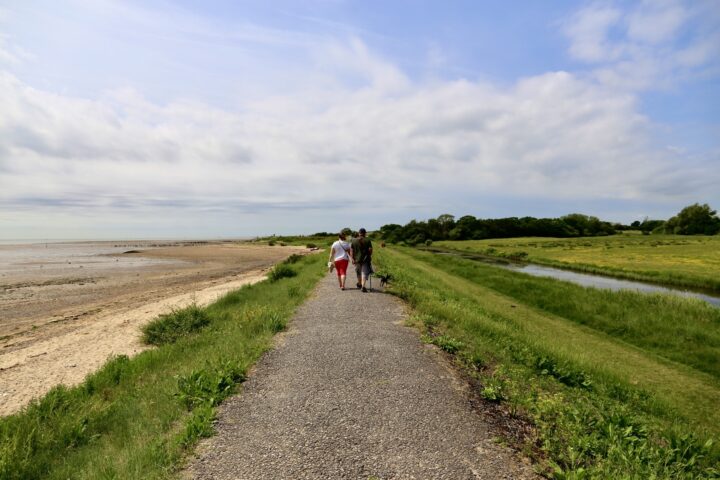
What we are doing at Cudmore Grove and why
Cudmore Grove is designated as a Site of Special Scientific Interest, a Ramsar site, National Nature Reserve and Special Protection Area.
Its valuable mix of habitat and location on the estuaries is hugely important for a variety of common, rare and declining wildlife.
At Cudmore Grove this includes protected birds such as brent geese, lapwings, redshanks and ringed plover which are classified as red and amber under the Birds of Conservation Concern. As well as rare Fisher's estuarine moths, up to 15 types of butterflies, insects, lizards and small mammals also thrive here. This variety of wildlife also attracts birds of prey including barn owls which nest on site.
We're therefore excited to be undertaking an ambitious landscape restoration and management programme to support a nationwide effort to protect and enhance the environment for the future. New programmes will compliment the work our team are already undertaking to support biodiversity in the park.
This work is agreed by Natural England (the government’s statutory body responsible for natural green infrastructure) and supported by a government funded scheme known as Countryside Stewardship.
A series of habitat audits and focussed surveys will be ongoing to check the impact and ensure that the restoration and management is successful.
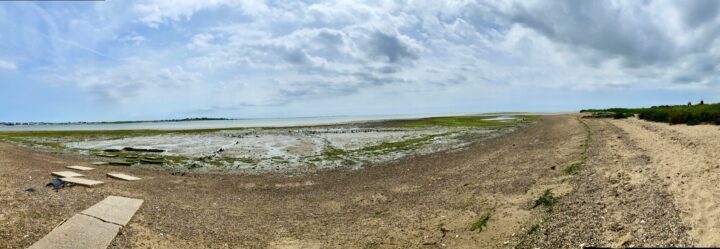
The importance of mudflats and saltmarsh
Slow moving tides over a flat expanse of mud form mudflats. These mudflats, including those at Cudmore Grove, tend to support a huge range of food for flocks of wading birds including various shellfish, worms and snails.
Heading inland, mudflats become saltmarsh. At Cudmore Grove we are working with local groups to support and protect ground nesting waders in this area, such as the ringed plover to breed more successfully. It is also very important that walkers and dogs act responsibility so that the birds are not disturbed.
Carbon is captured by the plants growing in the saltmarsh through photosynthesis and is stored both in the plant and the sediment beneath, which can extend several metres deep.
A hectare of saltmarsh can capture two tonnes of carbon a year and lock it into sediments for centuries. If the saltmarsh remains undisturbed the carbon in the soil can be stored for millennia.
Read more about carbon capture through saltmarsh with The Wildlife Trusts.
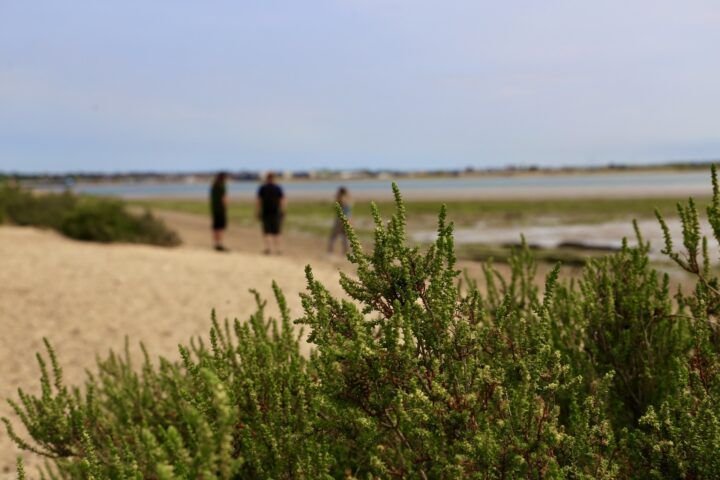
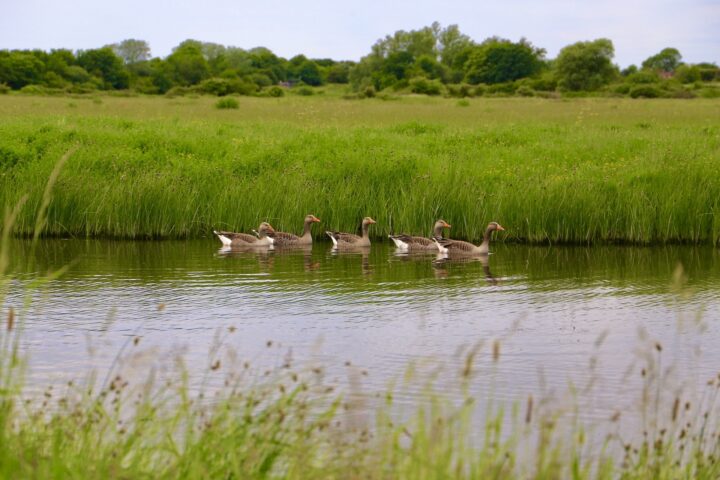
Glorious grazing marsh
At Cudmore Grove we are also planning to improve our low-lying grazing marsh which is a Site of Special Scientific Interest (SSSI). This area is managed for the benefit of waders and overwintering species such as the brent geese that are only found at a small number of sites in the UK.
The aim is to protect and boost the breeding success of these birds by installing fencing to keep predators out of this area as well as protecting the borrow dyke. The dyke is valuable habitat and home to water voles and birds.
This should benefit the populations of protected birds such as avocet, lapwings and redshanks which we know already frequent this area of the site.
Grazing marsh is also important for the plants and invertebrates it supports. It is a valuable ecosystem, capturing carbon and storing floodwater, recycling nutrients as well as providing key habitat.
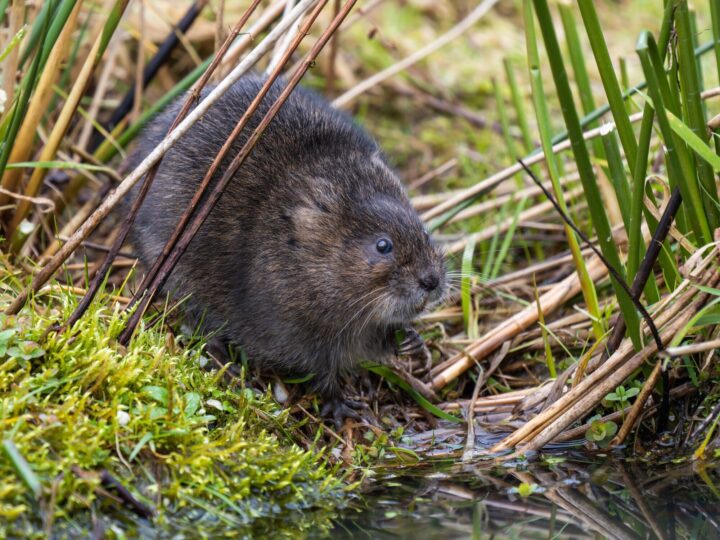

Grassland at Cudmore Grove
In the wildflower meadow at the heart of the site (and close to the car park) the grass is left long throughout the year to attract small mammals, skylarks, lizards and insects while kestrels and barn owls hunt over these areas. (The barn owls nest in the trees over the water hole at the bird hide.)
On summer days up to 15 types of butterfly can be seen in a day feeding on the meadows and hedgerows.
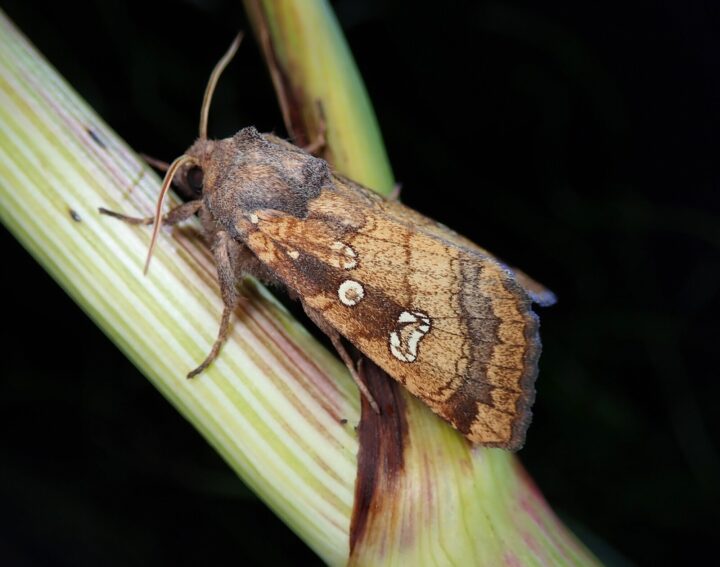
Rare Fisher's estuarine moths at Cudmore Grove
We are also undertaking some works to support Fisher's estuarine moths on the site.
In Britain, this rare moth is only found in North Essex and Kent. The larvae are dependent on hog’s fennel, which is uncommon and at risk from rising sea-levels. Efforts are being made to increase suitable habitat for the moth and establish populations that are safe from flooding.
At Cudmore Grove we are controlling the hog’s fennel as part of our grassland management programme.
Read more about the Fisher's estuarine moths on the butterfly conservation website.
Discover Landscape Restoration projects across the Essex Country Parks
The work taking place at Cudmore Grove is just part of an ambitious scheme across the Essex Country Parks.
Learn more about the other exciting projects funded by the government's Countryside Stewardship scheme.